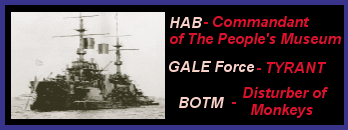Yeah, sort of. I'm fond of my country and it's people. In many ways Russian buildings, russian machinery and russian people share similar traits - they're not exactly the nicest, maybe not the most well-groomed, but they're very hardy and resilent - something that our natural environment forces on us - design must be functional and preferrably cheap, nevermind the looks.
 Series #5. An Ode to Concrete Panel Buildings - the Khrushovka and the Brezhnew 9-14
Series #5. An Ode to Concrete Panel Buildings - the Khrushovka and the Brezhnew 9-14
Precast concrete buildings, or "panel houses" (panel'nye doma) as they're known in Russia, have been mass-started in the age of Khrushev. In the 1960s, those panel houses were built only 5-storeys high, since it was the maximum number of storeys allowed without an elevator by medical standards.
However, in the 70s and 80s the "khrushevka" was discarded and new typical projects were made - of 9, 11, 12 and 14 storey concrete buildings. The most common of those were the 9-storey "ocean liner houses" (
series 600 and it's offshoots), nicked for long and uniform rows of windows resembling the decks of an ocean liner. A bit less common - "towers" - 1-entrance 14-storey buildings. Those buildings could house (and therefore heat and shelter) more people. The common planned flats were 1, 2 and 3 rooms. They might not have the best looks, but they're very resilent and cheap to construct, allowing millions of Soviet citizens to receive much better housing. They also allow for centralized heating, food supply and education, which is important in such harsh climatic conditions as Russia's. A common Soviet "brezhnewka" is fitted with a fast lift and a garbage chute. The panels as you can see below are covered with little white plates - those are meant to protect the concrete surface from deterioration. During the Soviet era, they were produced massively and we used to grab handfuls of them at construction sites and play something similar to "marbles".
Today buying a flat in a "brezhnewka" is the dream for a generic young specialist or a well-paid worker in Russia - what most would say is the base of "middle class" - prices start out from 1 million roubles for a 1-room flat in provincial cities. The 9-storey panel house project remains popular and constitutes the bulk of new housing in construction in Omsk.
Wonky patterns and color rythms:





Prefab projects didn't go completely undecorated - buildings which stand on the exterior part of a quartal usually have some sort of color patterns, decorative tiling or even murals. In one quartal all 5-storey prefabs have different decorative patterns on their balconies:
 Murals on the sides of three concrete houses, a triptych:
Murals on the sides of three concrete houses, a triptych:

They are on three separate houses' sides, and depict scenes from traditional Russian fairy tales; similar murals depicting breakthroughs in science, space exploration, and industrial production could be found elsewhere in the city.
Those murals were found on the street of a Hero:

S.G. Fugenfirov, born 1917, died in the Great Patriotic War, 1942, defending the country in the Omsk division #308.
Another set of murals was found on a school building:


Locations:

Welcome to a walk around my neighborhood!

The left bank of Omsk is a child of the late 60s early 70s, a swampy river delta transformed into a massive living space through the feat of human engineering and labour, one of the few such experiments in the world. It's completely built with concrete prefabs of the Brezhnew era.
Note how dozens of shops, schools, kids' clubs and kidergartens are hidden amidst uniform 9-storey prefabs. The whole district is very orderly planned and uniform, it was envisioned as a "worker's living place" where people could educate their kids and have all needed infrastructure at hand per the general city plan.





















 "
"


























